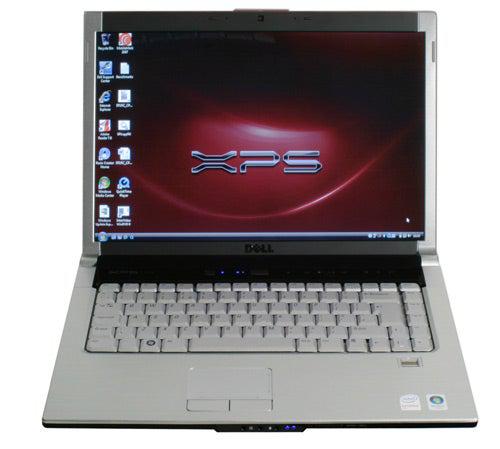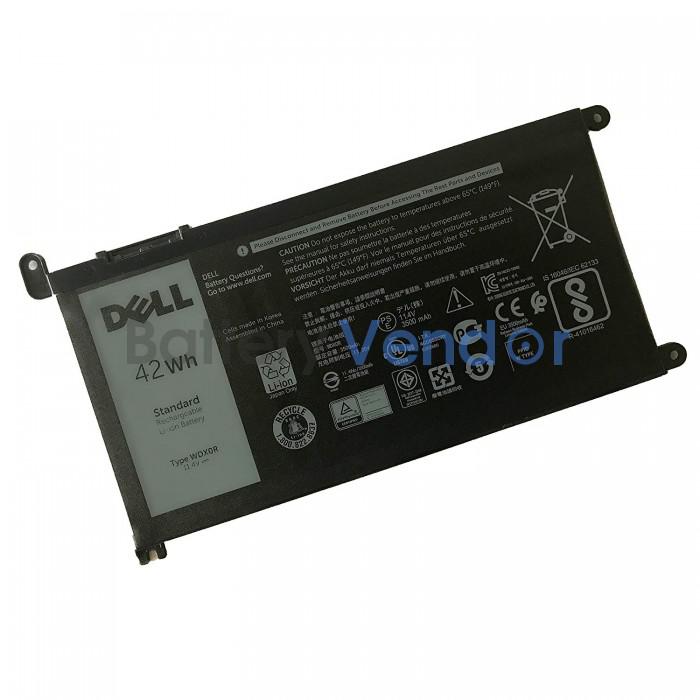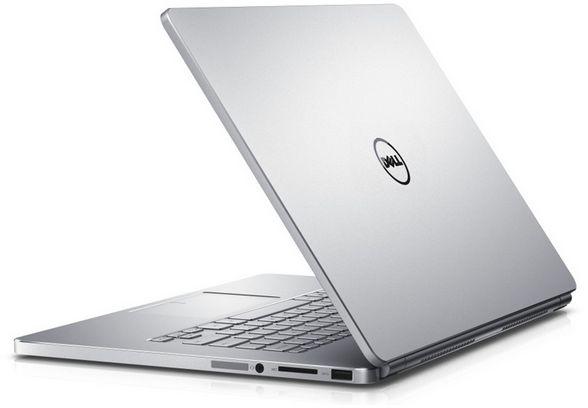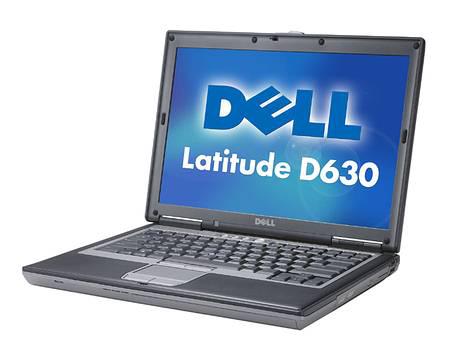by Jerry Jackson
Dell
made a serious effort in 2007 to listen to customer feedback criticizing Dell's older, thick and heavy laptops. The result was the amazingly thin and light XPS M1330, one of the most attractive laptops of 2007.
The new
Dell XPS M1530
is an impressive 15.4" screen notebook that is similar (only larger than) to the very successful 13-inch
XPS M1330
.
Dell XPS M1530
(
see big picture
)
Our pre-production XPS M1530 comes with the following specs:
15.4 inch WXGA (1280 x 800) CCFL glossy screen
"Crimson" red paintwork (also available in "Tuxedo" black or "Alpine" white)
2.2 GHz Core 2 Duo T7500 processor, Santa Rosa chipset (up to 2.4 GHz available)
2GB DDR2-667 SDRAM (up to 4GB DDR2 SDRAM available)
160GB SATA 5400rpm Hard Drive (32GB SSD drive available)
Slot-loading dual-layer DVD±RW drive
NVIDIA GeForce Go 8600M GT with 256MB GDDR3
WWAN option for Verizon
Ethernet, 802.11a/g/n (Intel 4965), Bluetooth option
Integrated 2.0 megapixel webcam
HDMI, VGA, S-Video, Firewire/1394, three USB 2.0 ports, integrated
media
Reader (MS, SD, xD), fingerprint reader
Media Center remote control in ExpressCard slot
Windows Vista Home Premium
Dimensions (with 6-cell battery): 14.06" x 10.34" x 0.93" - 1.38"
Weight starts at 5.9 pounds with 6-cell battery (6.29 pounds with 9-cell)
Build and design
The Dell XPS M1330 has been highly acclaimed for its design and feature set in a portable 13.3-inch form factor, but the best-selling laptops are in the 15.4-inch screen format. Dell is in business selling more laptops and To make customers happy and felt it prudent to offer something bigger that would appeal to more people. And that's exactly what the M1530 is - a larger version of the M1330.
As said in our
Article at first sight
, it's as if Dell put the M1330 on steroids and the M1530 is the end result - the laptop size increased proportionately and it's also more powerful in its new form. Design and looks are mostly the same, the keyboard feels the same, the touch sensitive ones Controls are replicated and the ports are mostly the same (although you do get an extra USB 2.0 port on the M1530). However, if we compare the M1530 and M1330 side-by-side we can't help but notice the M1530's design being 'overweight' in comparison keep.
Top view of Dell XPS M1530 (
see big picture
)
However, there are some notable differences other than size between the M1530 and M1330. The M1530 can be configured with a more powerful Nvidia 8600M GT graphics card for increased gaming performance over the XPS M1330, which only offers up to the Nvidia 8400M GS. The M1530 offers also up to a 2.80GHz Intel T7800 processor, while the XPS M1330 tops out at an Intel T7500 2.2GHz processor. If you care about performance metrics and don't use a laptop much, then the XPS is for you M1530 of course more suitable for you.
Some people may wonder if they are interested in the
Dell Inspiron 1520
15.4" notebook or the Dell XPS M1530 15.4". After all, both are consumer notebooks from the same company that can be configured in a similar way. On the one hand, the design of the XPS M1530 is much more striking than the Inspiron 1520. The M1530's barrel hinge, flip-up screen, and slanted optics are just plain cool. Second, the
XPS M1530 weighs only 5.9 lbs
with a standard 6-cell battery and only 6 lbs and 4.6 ounces (6.29 lbs) with its 9-cell battery. The Inspiron 1520 weighs over 7 lbs with the 6-cell battery Other advantages of the XPS M1530 notebook include a slimmer optical drive with slot, touch-sensitive illuminated keys, dedicated XPS technical support, media remote control and a thinner profile.
Screen
Another difference worth noting is that the M1530 is currently only offered with a standard 15.4" widescreen XGA (1280 x 800) display, while the XPS M1330 has the option for a thinner and more energy efficient LED Dell says the XPS M1530 will be available in a variety of screen resolutions next year...including LED backlighting.
While some may be a little annoyed by the M1530's initial lack of LED backlighting, the standard CCFL display is still delightfully bright and pristine. Plus, with the standard thicker CCFL screen, you get a taller 2.0MP webcam while with a thinner LED screen, only a VGA resolution cam can be attached.
Our pre-production unit's screen looks pristine up front and horizontal viewing angles are great. Upper vertical viewing angles are good, but at lower viewing angles colors started to invert when the screen was tilted back.
(
see big picture
)
(
see big picture
)
(
see big picture
)
(
see big picture
)
Keyboard, touchpad and media controls
The XPS M1530's keyboard is similar to the XPS M1330 for obvious reasons. The keyboard is firm with virtually no flex, and the keys have excellent travel and cushioning. The XPS M1530 is really fun to type on. The only complaint I have The one thing I don't like about the keyboard is that if your fingernails are a bit long, they could get caught under the keys, but this shouldn't be a problem for most men.
(
see big picture
)
The touchpad works well enough, although it seems a bit small given the size of the notebook. The mouse buttons have excellent travel and cushioning, although I felt they "clicked" a bit too much when pressed. The good news thing about the touchpad is that it's responsive, has dedicated scrolling areas, and feels well-structured.
(
see big picture
)
A row of touch-sensitive, blue LED-backlit media keys are located above the keyboard similar to the keys on the M1330. A nice feature about the media keys is that the blue LEDs only glow for a split second after you press them, so they don't distract you when by glowing all the time.
Dell also includes a Media Center remote that fits neatly into the ExpressCard slot on the side of the notebook. This is a great accessory for presentations or if you want to control a DVD from across the room.
Included remote control with XPS M1530 (
see big picture
)
connections and functions
The M1530's port selection is quite good for a notebook of this size. Here's a quick rundown of what you get:
Front view: microphone input, dual headphone output and memory card reader.(
see big picture
)
Left side: DC power jack, two USB ports, VGA out, Ethernet/LAN, HDMI and FireWire.(
see big picture
)
Right side: ExpressCard slot, WLAN on/off, WLAN catcher, optical drive with slot loading, USB connection, S-Video output and slot for a Kensington lock.(
see big picture
)
XPS M1530 rear view: no ports here.(
see big picture
)
The built-in HDMI is a very nice touch for those who want digital video output, S-Video is there for the more old-fashioned approach too. Featuring FireWire, three USB ports, a media card reader, two headphone jacks, microphone jack, ExpressCard slot and Ethernet connection, you are well equipped when it comes to connections.
I was a little disappointed with the fact that the M1530 only has three USB ports, as most 15.4" notebooks have four. However, the multiple video-out options and overall thin design make the lack of USB Connections "somewhat" understandable.
Some of our editorial staff are big fans of slot-loading drives, and while I think these drives look fantastic, I'm not entirely convinced by the technology. Slot-loading drives don't like the small DVDs or CDs you sometimes get with hardware drivers or received in the mail. Another issue is that slot-loading drives tend to be a bit noisier than traditional tray-type drives (more on that later in this review).
speaker
The speaker quality was "acceptable" for a notebook without a built-in subwoofer. Based on
M1330
that one of our editors owns, I would guess that the speakers in the
M1530
are the exact same parts as the speakers used in the M1330.
The M1530's speakers are located at the top of the keyboard area above the media keys. Not much to write about the speakers, they get loud enough with minimal distortion, but the sound is a bit tinny like almost all laptop speakers.
Performance and benchmarks
Without any adjustments to the drivers or removing any software, the device performed very well – the 2.20 GHz Core 2 Duo processor and the Nvidia 8600M GT 256 MB card will satisfy most gamers except for the harder cores and certainly please the average PC user. The 3DMark benchmarks may seem unusually high at first glance, but the Nvidia 8600M GT card in the M1530 uses GDDR3 RAM instead of the more common GDDR2.
Frame rates for games like the Crysis demo and Call of Duty 4 were all quite playable and smooth with a few moments of lag during Crysis.
Game
Average Frame Rate (FPS)
crysis
~20
Call of Duty 4
~40
Of course, the M1530 is also available with Nvidia 8400M GS graphics for customers who don't care about playing the latest games.
wPrime is a program that forces the processor to perform recursive mathematical calculations. The advantage of this program is that it is multi-threaded and can use both processor cores at the same time, which allows for more accurate benchmarking measurements than Super Pi.
Laptop / CPU
wPrime 32M time
Dell XPS M1530 (Core 2 Duo T7500 @ 2.2GHz)
37,485s
Portable One SXS37 (Core 2 Duo T7250 @ 2.0GHz)
41,908s
Sony VAIO NR (Core 2 Duo T5250 @ 1.5GHz)

58,233s
Toshiba Tecra A9 (Core 2 Duo T7500 @ 2.2GHz)
38,343s
Toshiba Tecra M9 (Core 2 Duo T7500 @ 2.2GHz)
37.299s
HP Compaq 6910p (Core 2 Duo T7300 @ 2GHz)
40.965s
Sony VAIO TZ (Core 2 Duo U7600 @ 1.20GHz)
76,240s
Zepto 6024W (Core 2 Duo T7300 @ 2GHz)
42.385s
Lenovo T61 (Core 2 Duo T7500 @ 2.2GHz)
37,705s
Alienware M5750 (Core 2 Duo T7600 @ 2.33GHz)
38,327s
Hewlett Packard DV6000z (Turion X2 TL-60 @ 2.0GHz)
38,720s
Samsung Q70 (Core 2 Duo T7300 @ 2.0GHz)
42.218s
Acer TravelMate 8204WLMi (Core Duo T2500 @ 2.0GHz)
42,947s
Samsung X60
plus
(Core 2 Duo T7200 @ 2.0GHz)
44,922s
Zepto Znote 6224W (Core 2 Duo T7300 @ 2.0GHz)
45,788s
Samsung Q35 (Core 2 Duo T5600 @ 1.83GHz)
46,274s
Samsung R20 (Core Duo T2250 @ 1.73GHz)
47,563s
3DMark06 comparison results for graphics performance:
Notebook
3DMark06 result
Dell XPS M1530 (2.20GHz Intel T7500, Nvidia 8600M GT 256MB)
4,332 3D marks
Dell Inspiron 1520 (2.0GHz Intel T7300, NVIDIA 8600M GT)
2,905 3D marks
Dell XPS M1330 (2.0GHz Intel Core 2 Duo T7300, NVIDIA GeForce Go 8400M GS 128MB)
1,408 3D marks
Samsung Q70 (2.0GHz Core 2 Duo T7300 and nVidia 8400M G GPU)
1,069 3D marks
Asus F3sv-A1 (Core 2 Duo T7300 2.0GHz, Nvidia 8600M GS 256MB)
2,344 3D marks
Alienware Area 51 m5550 (2.33GHz Core 2 Duo, nVidia GeForce Go 7600 256MB .)
2,183 3D marks
Fujitsu Siemens Amilo Xi 1526 (1.66 GHz Core Duo, nVidia 7600Go 256 MB)
2,144 3D marks
Samsung X60plus (2.0GHz Core 2 Duo T7200, ATI X1700 256MB)
1,831 3DMarks
Asus A6J (1.83GHz Core Duo, ATI X1600 128MB)
1,819 3D marks
HP dv6000t (2.16GHz Intel T7400, NVIDA GeForce Go 7400)
827 3D marks
PCMark05 measures the overall performance of the notebook:
Notebook
PCMark05 result
Dell XPS M1530 (2.20GHz Intel T7500, Nvidia 8600M GT 256MB)
5,412 PCMarks
Dell Inspiron 1520 (2.0GHz Intel T7300, NVIDIA 8600M GT)
4,616 PCMarks
Dell XPS M1330 (2.0GHz Intel Core 2 Duo T7300, NVIDIA GeForce Go 8400M GS)
4,591 PCMarks
Lenovo ThinkPad X61 (2.0GHz Intel Core 2 Duo T7300, Intel X3100)
4,153 PCMarks
Lenovo 3000 V200 (2.0GHz Intel Core 2 Duo T7300, Intel X3100)
3,987 PCMark
Lenovo T60 Widescreen (2.0GHz Intel T7200, ATI X1400 128MB)
4,189 PCMarks
HP dv6000t (2.16GHz Intel T7400, NVIDA GeForce Go 7400)
4,234 PCMarks
Fujitsu N6410 (1.66 GHz Core Duo, ATI X1400)
3,487 PCMarks
Alienware M7700 (AMD Athlon FX-60, Nvidia Go 7800GTX)
5,597 PCMarks
Sony Vaio SZ-110B in speed mode (with Nvidia GeForce Go 7400)
3,637 PCMarks
Asus V6J (1.86GHz Core Duo T2400, Nvidia Go 7400)
3,646 PCMarks
HDTune Results:
(
see big picture
)
heat and noise
The XPS M1530 does a decent job of keeping the heat under control.
The system fan and heatsinks in the M1530 do a great job of regulating heat when the system is under load... as we've noticed running multiple benchmarks in a row. The CPU temperature reached just 58 degrees Celsius during multiple 3DMark06 tests. The fan moved a considerable Lots of hot air, but the noise was relatively low and wasn't noticeable over the background noise most of the time. However, when the fan was on its highest speed, we recorded the volume of the noise on
53-56 dB from about 5 cm from the fan outlet.
(
see big picture
)
(
see big picture
)
Unfortunately, noise was an issue with the M1530. The slot-loading optical drive was quite noisy during Windows startup, disk insertion, or disk ejection. The noise is something like a small drill muffled under a pillow However, the optical drive produces acceptable noise levels when a hard drive is spinning in the drive.
The actual noise issue was with the hard drive. Due to the way the hard drive is attached to the case (and the thin metals), the Hitachi brand hard drive's spinning/scratching noise was amplified under the left palm rest. The hard drive noise was so loud that I could hear the hard drive scratching noises from two meters away, even when playing music at a reasonable volume through the built-in speakers. That's just too loud.
battery life
The extended-life 9-cell battery gives the M1530 excellent battery life. With Vista's power management in "High Performance" mode, maximum screen brightness, and Wi-Fi on, the 9-cell battery delivered over 3 hours and 30 minutes of battery life. We are We are confident that the 9-cell battery can deliver more than 4 hours of runtime in "Balanced" or "Power Saving" mode and reduced screen brightness.
It's worth mentioning that with the 9-cell battery you get more tilt towards the keyboard overall, we actually like this for ergonomic reasons, it feels more comfortable when typing.
The 9-cell battery adds just under another 0.75 inches to the rear.
(
see big picture
)
Dell also included a standard 6-cell battery with our pre-production test unit. Unfortunately, the standard 6-cell battery had been abused (cracked) before we received the unit, so we played it safe and didn't run any tests with the 6-cell battery. cell battery through.
diploma
Overall, the Dell XPS M1530 is a solid addition to Dell's lineup of notebooks. We praised the smaller XPS M1330 for having "a design that is second to none in its price range," but we didn't feel quite the same about the design of the larger M1530 strong. While this is certainly Dell's hottest 15.4" notebook, it's hard to shake the feeling that we're dealing with a "fat" M1330 with a larger screen.
While issues like a noisy slot-loading drive, noisy hard drive, and limited display options will make some discerning buyers look elsewhere, the M1530 is an excellent alternative to HP's popular dv6500t notebook in the same price range.
advantages
Thin and light... for a 15.4" Dell notebook
The Nvidia 8600M GT card option uses high-performance GDDR3 memory
Adequate battery life
Nice keyboard, touchpad and media keys
Disadvantages
Only three USB ports
The slot-loading drive is noisy when loading and ejecting
Hard drive noise is amplified by the case/mount design
Limited screen options at the time of this writing





